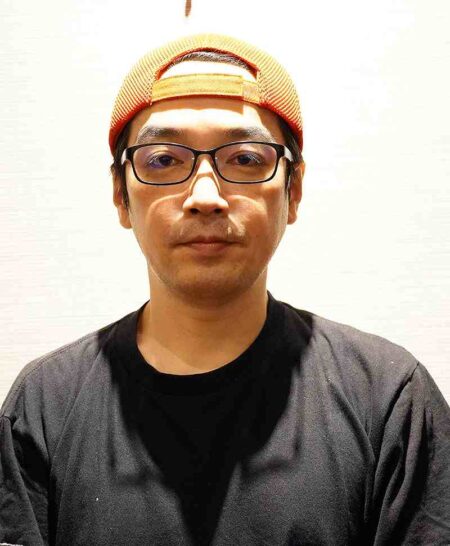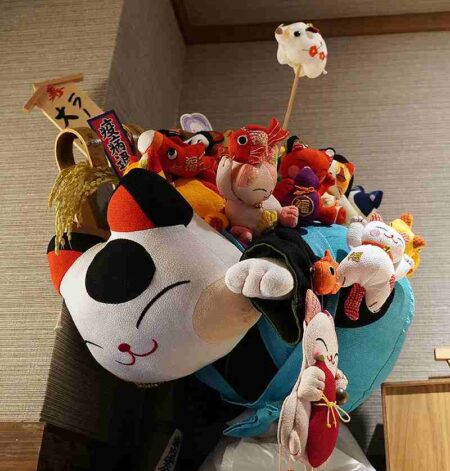
A classic Japanese soy sauce-based ramen at Daishi, located near Ochanomizu Station in Tokyo
13:23 JST, November 19, 2020
Do you know what naruto is? No, I’m not talking about the famous Japanese anime, but of a ramen topping. Naruto, or naruto-maki, is steamed fish paste with a pink spiral pattern in the center. Naruto used to be a typical ramen topping, but I haven’t seen it in a long time. I looked back at the more than 10 types of ramen we featured in this series and I couldn’t find one that used sliced naruto. But I saw it at Daishi, a ramen shop near Ochanomizu Station in Tokyo.

Sophisticated taste
Daishi offers a classic Japanese soy sauce-flavored ramen that looks like something out of an anime. Daishi’s ramen comes with naruto and a hard-boiled egg and is served in a bowl with a “raimon” pattern, which symbolizes thunder, printed on the inside edge of the bowl. The pattern originated in China and is often seen on ramen bowls at old-fashioned ramen restaurants. Daishi’s ramen reminded me of the food at a Chinese restaurant I used to go to as a child. Seeing the ramen and being in the shop suddenly made me feel nostalgic.
When I sipped the clear soup, it was light but had a rich flavor. I was able to taste the chicken that was used to make the broth. But what other ingredients were used? I have no idea, but they all blended together so beautifully.
The level of saltiness was perfect. The slices of pork confit, which were not classic chashu pork, were delicious. The sliced naruto was a bit sticky and I enjoyed the texture. The noodles were thin and straight, so you can easily slurp them up.
It only took me a few minutes to finish the ramen, and without thinking, I said to myself, “Is it all gone?” Even though Daishi’s ramen looks like the ramen I used to eat as a child, the taste is actually much more complex and sophisticated.

Not following trends

Kazunori Yanazaki, the owner

Yanazaki puts the noodles into hot water.
“I want to make the most delicious ‘standard’ ramen,” said Kazunori Yanazaki, 49, the owner of the restaurant.
When he opened his shop in 2007, tonkotsu (pork bone) ramen and tsukemen (dipping ramen) were incredibly popular, and he saw that not many new restaurants sold the typical soy sauce ramen. So, Yanazaki, who loves the standard, simple ramen, started serving the soy sauce-flavored ramen.
“Fads will come and go, but if you don’t go chasing the newest trends, your menu will never go out of style,” he said.
His ramen may be simple, but he has great enthusiasm for the dish. The soup, which I could only figure out one component, has a whopping 15 ingredients, including pork bones, onions and dried bonito.
“Doesn’t the soup get cloudy if you add pork bones?” I asked.
He said he uses chicken breast to make the soup transparent. Yanazaki said he strains the cloudy soup made from pork bones and other ingredients, lets it cool down, then adds the chicken breast and lets it simmer. The chicken breast absorbs the oil and other elements that make the soup cloudy and it will enhance the flavor of the chicken.
“I learned how to make the soup from working at other ramen shops and reading books about cooking theory,” Yanazaki said.


Chicken breast makes cloudy soup, which has been made with pork bones and other ingredients, transparent.
Virus prevention
Before Yanazaki started working at ramen shops, he studied chemistry in high school and atomic energy in university. Yanazaki’s scientific way of thinking can be seen all throughout Daishi.
Yanazaki said: “I calculate the salt concentration. For example, the salt concentration in tonkotsu ramen is around 3% and salt-based ramen is at around 2%. I end up just doing a taste test, but I keep those percentages in mind.”
One of the features of this shop is its coronavirus prevention measures. The seats are divided by partitions, and each seat has its own water pitcher and a box of tissues to minimize contact with other customers.
A piece of paper explaining the measures the shop has taken to prevent the virus from spreading is displayed, along with photos of the shop’s ventilation system, at every seat. Air intake vents at the entrance and an exhaust vent in the kitchen were installed prior to the pandemic, and it allows air to flow from the entrance through the seating area and into the kitchen. Yanazaki said the idea was to prevent the heat and humidity of the kitchen from flowing into the seating area, but it also helps maintain good ventilation.
One of the restaurant’s regular customers, an infectious disease control specialist who works at a nearby university, mentioned on social media that the measures taken by the shop to prevent the coronavirus from spreading were almost perfect.
“I have taken thorough measures because I want my customers to be able to safely eat ramen,” Yanazaki said.

A water pitcher, a box of tissues and a bottle of disinfectant are placed at each seat, which is separated by partitions.

A piece of paper explaining the shop’s coronavirus prevention measures, along with photos of the restaurant’s ventilation system, is seen.
Honesty and hard work
Daishi’s philosophy of making simple ramen with honesty and hard work is written on two boards that are displayed on the wall inside the restaurant. I think that Yanazaki’s genuine and sincere personality made Daishi the earnest ramen shop that it is.

A board on a wall inside the shop that reads, Daishi makes simple ramen with honesty and hard work.

Cat ornaments are seen at a shop. In Japan, cats are thought to help businesses prosper.
Daishi is near Ochanomizu Station, which is where many universities are located, such as the Tokyo Medical and Dental University, but it is also an office district, making it a town of academics and business people.
There are also a number of historical sites that are associated with education and business. After eating ramen, you can visit such sites as Kanda Myojin shrine, which is a large red shrine that is said to help businesses prosper.


Kanda Myojin shrine near Daishi

Ochanomizu Station

University buildings are seen near Ochanomizu Station.

Daishi
2-1-2 Yushima, Bunkyo Ward, Tokyo.
Open from 11:00 a.m. to 3:00 p.m. and 5:00 p.m. to 8:45 p.m. on weekdays, 11:00 a.m. to 3:00 p.m. on Saturdays, and closed on Sundays and holidays.
Its “Ramen Lunch,” which is soy sauce-based ramen, homemade kimchi and rice, is also popular.

Chikako Minami, Japan News Staff Writer
Enjoys making ramen using a meal kit at home at least once a week and baking various types of bread.

"JN Specialities" POPULAR ARTICLE
-

The Japan News / Weekly Edition (12/12-12/18)
-

Noodle Dining Shunsai / Rich Oyster Ramen to Savor at Odasaga; Experienced 68-year-old Owner Creates Numerous Ramen Varieties
-

The Japan News / Weekly Edition (12/5-12/11)
-

People Keep Loved Ones’ Ashes Close in Special Jewelry, Small Urns as Unique Way to Memorialize Them
-

The Japan News / Weekly Edition (12/19-12/25)
JN ACCESS RANKING
-

Tokyo Economic Security Forum to Hold Inaugural Meeting Amid Tense Global Environment
-

Keidanren Chairman Yoshinobu Tsutsui Visits Kashiwazaki-Kariwa Nuclear Power Plant; Inspects New Emergency Safety System
-

Imports of Rare Earths from China Facing Delays, May Be Caused by Deterioration of Japan-China Relations
-

University of Tokyo Professor Discusses Japanese Economic Security in Interview Ahead of Forum
-

Japan Pulls out of Vietnam Nuclear Project, Complicating Hanoi’s Power Plans





























